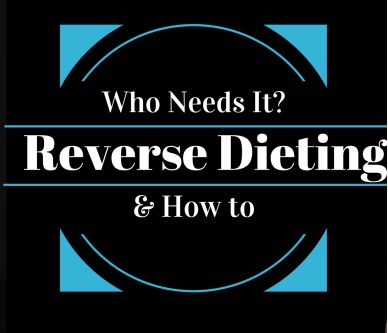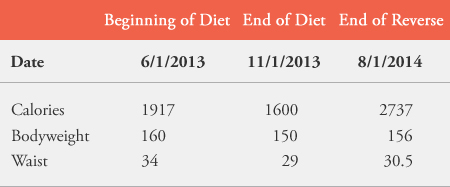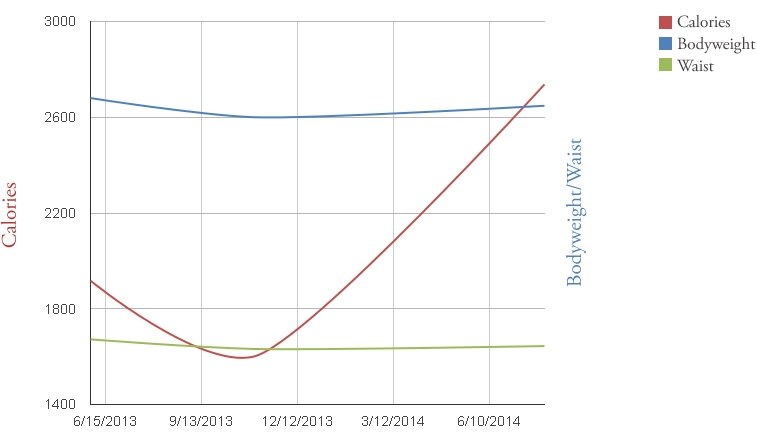What is reverse dieting?
What is Reverse Dieting?
What is reverse dieting?
“Reverse dieting,” simply put, simply put, is a transition period from a caloric deficit into caloric maintenance or surplus. In short, the goal is to increase your body’s ability to process calories and energy. It is a slow process that requires consistency and patience over time.
The goal is to maintain a leaner physique, make gains and eat more. It’s a transition where you add calories and decrease cardio…… and it can be a long process.
Who needs to reverse diet?

reverse dieting
- Anyone that has been on a low calorie diet (woman: 1,000-1200 cals or men: 1,200-1600 cals, Ref. 1) or a very low calorie diet (less than 1,000 cals) for long periods of time. A very low calorie diet is not recommended unless for an obese person under medical supervision. A calorie deficit can be created by cardio, strength training and eating less.
- Anyone who has been dieting and their weight has plateaued for more than 3 weeks. Note that if you have not reached your desired weight but your weight has plateaued for more than 3 weeks, you need to work on the health of your metabolism by reverse dieting. Once you have gotten calories back up while maintaining your weight, you can diet back down again.
- If your caloric deficit exceed 300-500 calories below maintenance, you need to diet slower and reverse back up a bit. See IIFYM.com calculator for BMR, maintenance calories and the correct calorie deficit for you.
The purposes of reverse dieting are as follows:
- restore metabolism
- restore hormonal health
- build muscle
- minimize fat gain
- prime the body for easier fat loss later down the road
If you’ve been dieting for a long time and you’ve found yourself spending increasingly more time in the gym while your food portions have dwindled away with not much to show for it in the way of results, you may want to consider reverse dieting. In fact, I would urge you to do so.
By adding calories slowly, you give your body time to adjust to them with the goal being as minimal body fat gain as possible.
These “calories”, that you add in while reverse dieting generally come in the form of carbohydrate and/or fat grams.
Generally speaking, amounts of 5-10g of carbohydrates and 1-3 g of fat per week are added.
However, it does vary for everyone. If you’re serious about long-term change, you must commit to a permanent lifestyle shift.
People respond to reverse dieting differently. Just in case you are unaware of how macronutrients translate into calories:
“Take my long-time client Samantha, for example. When she came to me, she was 5’10” 160lbs with a 27-inch waist. We dieted her down, and after a few months, she was feeling constantly fatigued and groggy, with her motivation at an all-time low. At that point, we switched gears and transitioned her into a reverse dieting phase for a solid nine months. She put her trust in me as her coach and stuck to her nutrition program diligently.
Here are her results:

reverse diet

reverse diet graph
Do you see what happened there?
During a timespan of nine months, she was able to exceed her starting Calorie intake by over 800 per day. Not only that, but she ended up a good deal leaner than she first came to me – four pounds off the scale and 3.5 inches off the waist, to be exact. While eating more food.
She was patient and consistent, and she is now enjoying the fruits of her labor.
Because listen: she may weigh six pounds more now than at the end of her diet, but she’s only put 1.5 inches on her waist while adding 1100+ Calories daily. We were able to push her food intake far, far more than her measurements increased.”
Reference:Thompson JL, Manore MM, Thomas JR. Effects of diet and diet-plus-exercise programs on resting metabolic rate: a meta-analysis. Int J Sport Nutr 1996; 6: 41–61.





